
Bloodwych is a dungeon role-playing video game, a dungeon crawler, developed for the Amiga, Atari ST, MS-DOS, Amstrad CPC, Commodore 64, and ZX Spectrum. Its box featured artwork by Chris Achilleos. The plotline identifies the player as a champion of Trazere who, after recruiting up to three fellow champions, travels through dungeons and mazes fighting creatures along the way to find and destroy the evil Zendick, and banish the Lord of Entropy.
Lisa Foster is a retired Canadian actress, model, visual effects artist, animation producer, and video game developer. She was the star of the 1983 film, Fanny Hill.
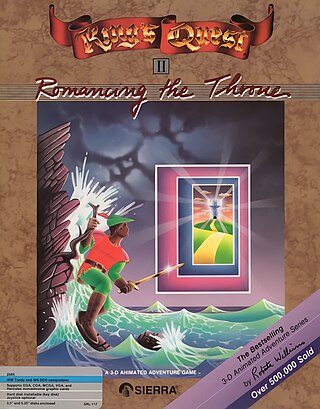
King's Quest II: Romancing the Throne is the second installment in the King's Quest series of graphic adventure games by Sierra On-Line. It was originally released in 1985 for PC DOS/PCjr, and later made available for the Apple II/IIGS, Atari ST, and Amiga. It uses the same AGI game engine as King's Quest I: Quest for the Crown and features King Graham as the player character. The title is a spoof of the 1984 film Romancing the Stone.
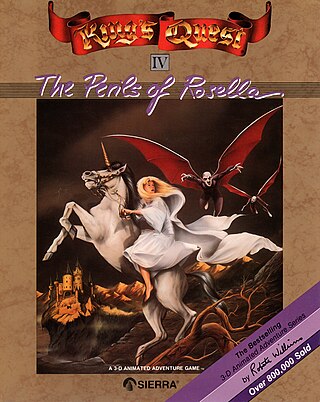
King's Quest IV: The Perils of Rosella is a graphic adventure game developed by Sierra On-Line for the MS-DOS, Amiga, Apple II, Apple IIGS, and Atari ST computers and released in 1988. The player takes on the role of Princess Rosella, daughter of King Graham of Daventry and the twin sister of Gwydion/Alexander, who must save her father and a good fairy and destroy an evil witch. Critically acclaimed, it was one of the first games for IBM PC compatibles to support a sound card.

King's Quest VI: Heir Today, Gone Tomorrow is a point-and-click adventure game, first released in 1992 as the sixth installment in the King's Quest series produced by Sierra On-Line. Written by Roberta Williams and Jane Jensen, King's Quest VI is widely recognized as the high point in the series for its landmark 3D graphic introduction movie and professional voice acting. King's Quest VI was programmed in Sierra's Creative Interpreter and was the last King's Quest game to be released on floppy disk. A CD-ROM version of the game was released in 1993, including more character voices, a slightly different opening movie and more detailed artwork and animation.

Leisure Suit Larry Goes Looking for Love (in Several Wrong Places) is the second game in the Leisure Suit Larry series of graphical adventure games, designed by Al Lowe and published by Sierra On-Line in 1988. Like its predecessor, Leisure Suit Larry in the Land of the Lounge Lizards, it was developed for multiple platforms, including MS-DOS, Atari ST and Amiga. It utilizes Sierra's Creative Interpreter (SCI0) engine, featuring 16-color EGA graphics and a mouse-based interface for movement. The story continues the exploits of Larry Laffer, who becomes stranded on a tropical island during an ill-fated vacation.
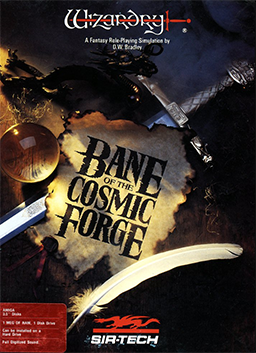
Wizardry VI: Bane of the Cosmic Forge is the 6th title in the Wizardry series of role-playing video games. It was the first in the trilogy surrounding the Dark Savant, which was followed by Wizardry VII: Crusaders of the Dark Savant and Wizardry 8. It was developed by Sir-Tech Software, Inc. and was released on the Amiga and DOS platforms in 1990 by the same company, and for the Super Famicom in Japan in 1995 by ASCII.

Universe is a graphic adventure game developed and published by Core Design for the Amiga, Amiga CD32 and DOS platforms in 1994. It was Core Design's second and last effort in the adventure game genre after Curse of Enchantia, of which it was originally planned to be a sequel.
Nicky Boum, more commonly known as Nicky Boom, is a side-scrolling platform game developed and originally released for the Amiga, Atari ST and MS-DOS by Microïds in 1992. The game began a second life in 2008, with a remake for mobile phones, which was made available for Windows computers late in 2008. It was also ported to the Tapwave Zodiac handheld in 2006. It has been also ported to PlayStation 2 as a homebrew version. and is available for Mac OS X on the Mac App Store. In Nicky Boom, the player controls the titular boy trying to rescue his grandfather from a wicked witch. The game received mostly positive reviews and a sequel titled Nicky 2.

Curse of Enchantia is a graphic adventure game developed and released by the British video game company Core Design for MS-DOS and the Amiga in 1992. The game tells the comic fantasy story of Brad, a teenage boy from modern Earth who was magically abducted to the world of Enchantia by an evil witch-queen. He needs to escape and find a way back to his own dimension.

Alien Breed 3D II: The Killing Grounds is a first-person shooter game developed by Team17 for Amiga. Published by Ocean Software in 1996, it is the fifth game in the Alien Breed franchise, a series of science fiction-themed shooters.

Valhalla: Before the War is an adventure game developed and published by Vulcan Software for the Amiga in 1995. It is a prequel to the game Valhalla and the Lord of Infinity. The game is known for the in game speech and is the second ever Amiga speech adventure. Vulcan Software has later reproduced the games with updated graphics and audio, available for free download in episodic format for the PC Windows.

Vulcan Software was an independent computer games company founded in 1994 in the UK. Vulcan started creating software for the Amiga computer systems. Its first commercial game was Valhalla and the Lord of Infinity, which was notable for being the first ever Amiga speech adventure game. In January 1999, Vulcan Software started development for PC computer systems. The Director of Vulcan Software is Paul Carrington. In 2007, Vulcan announced a partnership with Amiga, Inc to develop older Amiga games for PCs and other devices.

Elvira: Mistress of the Dark is a horror adventure/role-playing video game developed by Horror Soft and released by Accolade in 1990 for the Amiga, Atari ST, Commodore 64 and MS-DOS computers. It was Horror Soft's second published game after 1989's Personal Nightmare and stars the actress Cassandra Peterson as her character Elvira.

Wings of Death is a 1990 vertically scrolling shooter developed by Eclipse Software and published by Thalion Software for the Atari ST, then ported to the Amiga. In Wings of Death, the player controls a mage turned into a winged creature on a quest to defeat a wicked witch. The game was well received and was followed by the science fiction-themed sequel Lethal Xcess in 1991.

Storm Warrior is a 1989 beat 'em up video game developed and released by Elite Systems for the Amstrad CPC and Commodore 64 8-bit home computer systems. The game casts the player in the role of a prince on a quest to rid his kingdom of a witch's curse. It is unrelated to the 1984 game Storm Warrior.
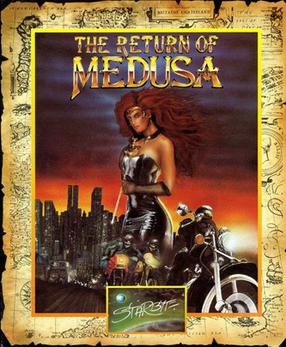
The Return of Medusa, also known as The Return of Medusa: Rings of Medusa II, is a 1991 role-playing video game and strategy video game hybrid developed by X-Ample and published by Starbyte Software for Amiga, Atari ST and PC DOS as a sequel to the 1989 game Rings of Medusa. A planned Commodore 64 version was cancelled.
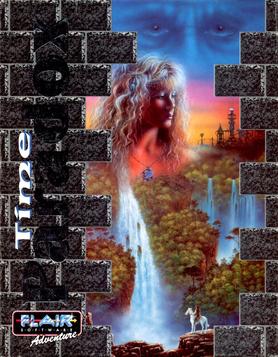
Time Paradox is a point-and-click adventure game developed and released by Flair Software for the MS-DOS in 1996 only in Europe.
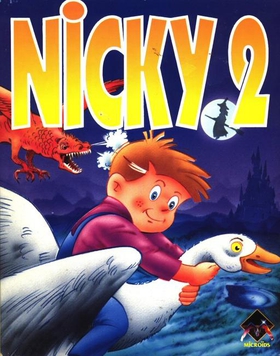
Nicky 2, or Nicky II, is a platform game developed and originally released for the Amiga, Atari ST, and MS-DOS by Microïds in 1992. It is a sequel to 1992's Nicky Boom in which the boy Nicky returns to fight evil forces. Its iPhone version was released as Nicky Boom 2 in 2009.

Valhalla and the Lord of Infinity is a 1994 adventure video game by Vulcan Software. It spawned a prequel and a sequel, Valhalla and the Fortress of Eve and Valhalla: Before the War.


















